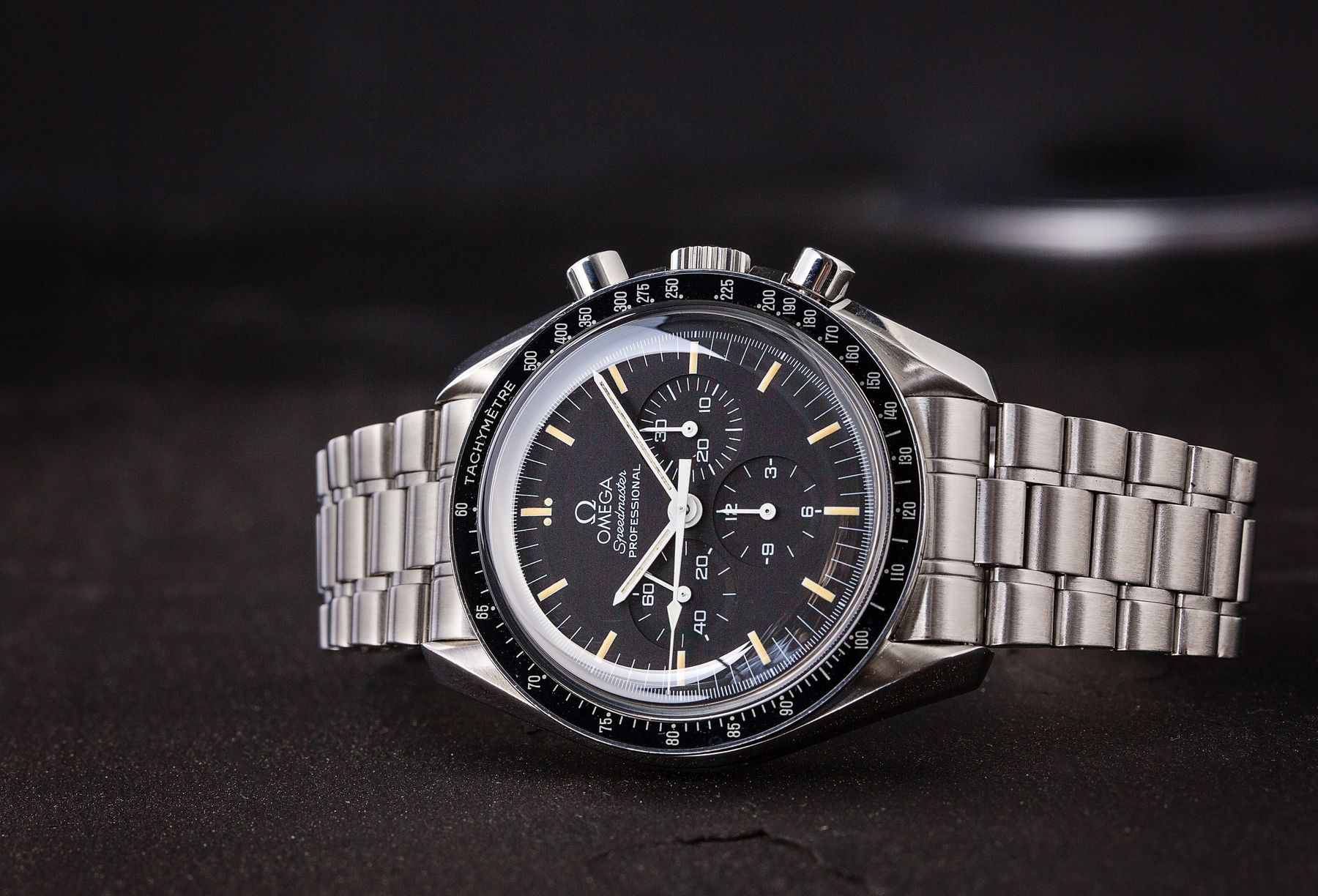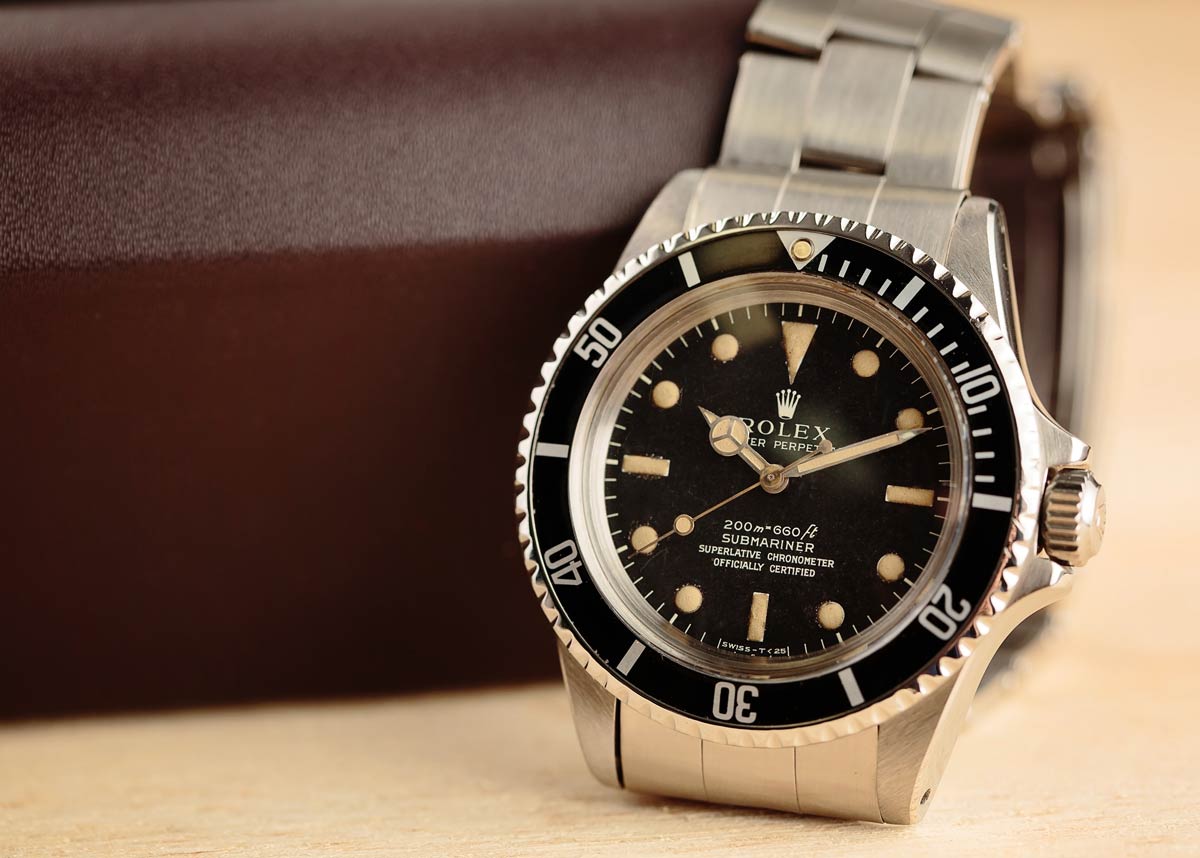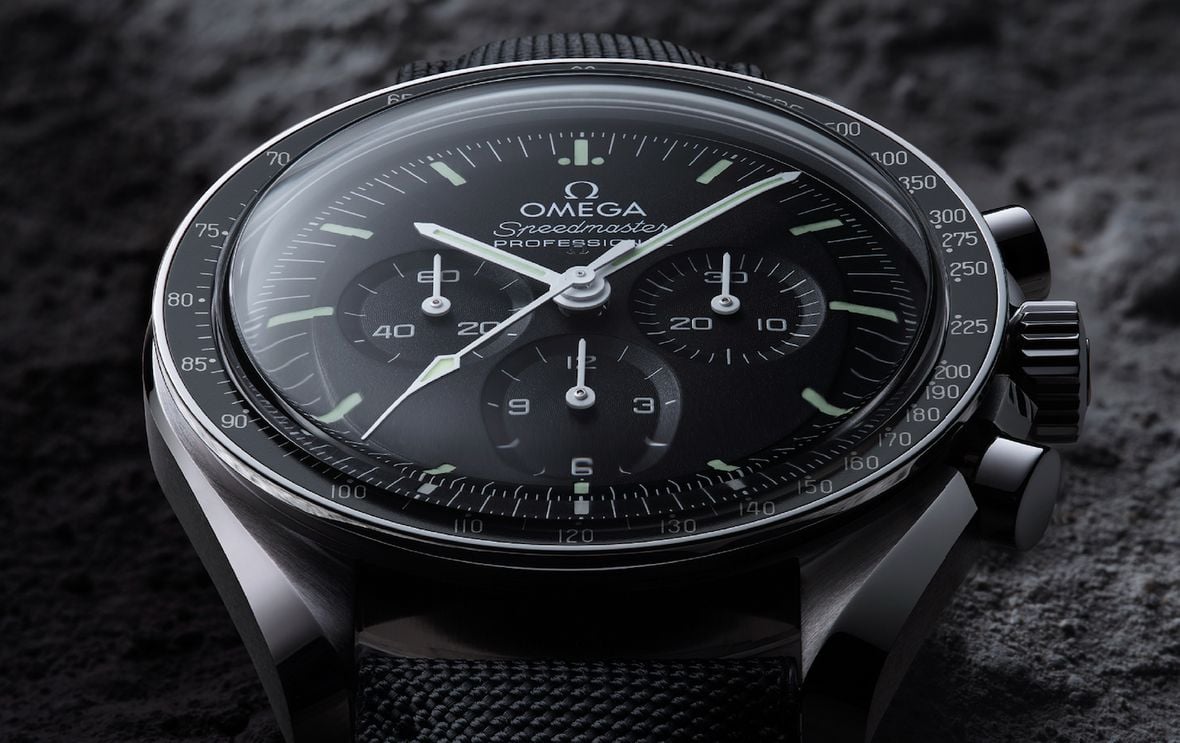Every single year, the watch buying market is introduced to a bevy of new chronographs, each touting the ability to fill a void in a watch aficionado’s stable. Given that the designs and technology backing these watches are highly influenced by industry trends, their chances of becoming time-tested classics are often slim to none. This is why so many collectors choose to invest in heralded icons like the legendary Omega Speedmaster or other models from the brand, that have no chance of going out of favor anytime soon.
As you probably already know, the Omega Speedmaster Professional gained worldwide recognition when it became the first chronograph to reach the Moon in 1969 with the astronauts of Apollo 11. After that, it forever became known as the Moonwatch. Throughout Omega’s space-faring chronograph’s history, we’ve seen several significant Moonwatch references, including the ref. 145.022, which never made it to the Moon but was the Speedmaster Professional that officially took on the Moonwatch title.
Let’s take a closer look at what affords the reference 145.022 its reverence, and the various incarnations that have made it a vintage watch collecting mainstay.
Omega Speedmaster Professional Moonwatch 145.022
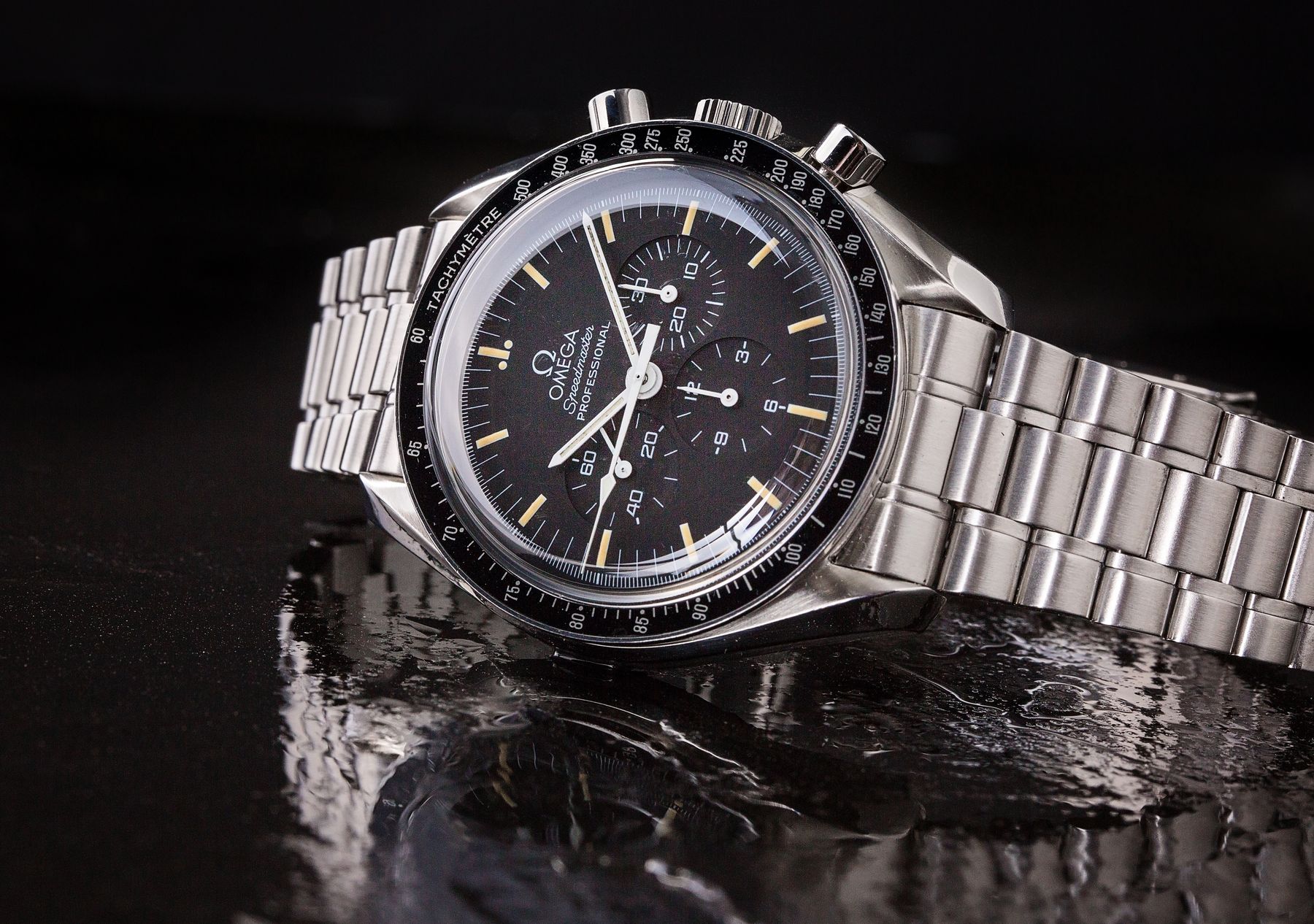
Speedmaster 145.022 Key Features:
- Production years: 1968 – 1988 (145.022 becomes 145.0022 in 1981)
- Case Size: 42mm
- Case Material: Stainless Steel
- Bezel: Fixed, Black, Tachymeter Scale
- Dial: Black, Three Sub-dials, Luminous Hour Markers.
- Crystal: Hesalite
- Lume: Tritium
- Functions: Central Hour and Minute Hands, Central Chronograph Hand, 30-Minute Totalizer, 12-Hour Totalizer, Running Seconds
- Movement: Cal. 861 manually wound chronograph movement
Click here for our Ultimate Buying Guide on the Omega Speedmaster.
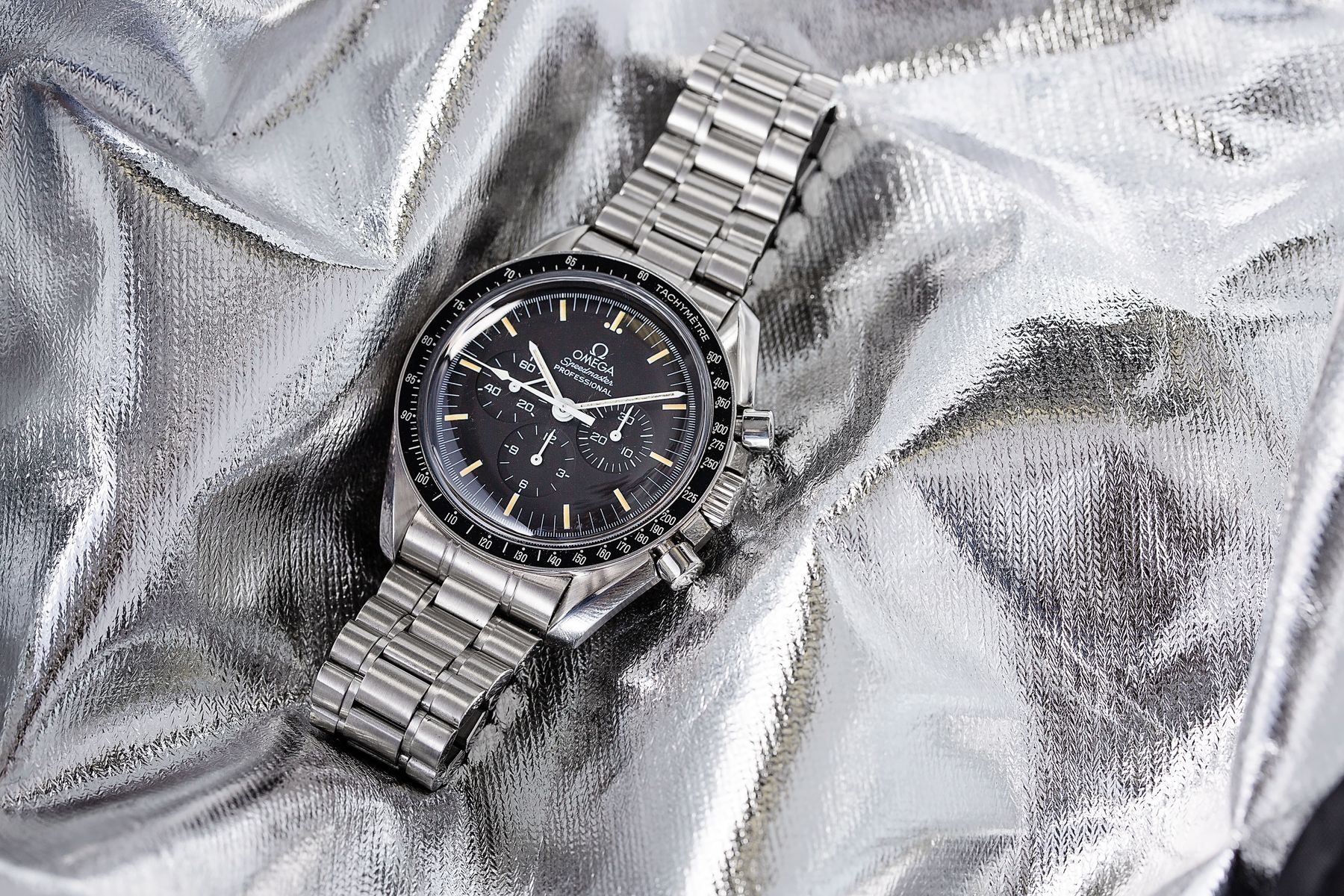
Speedmaster Professional Reference 145.022
Introduced in 1968, the Speedmaster 145.022 replaced the preceding reference 145.012. In the lineage of Speedmaster references, the ref. 145.022 enters the picture at a truly exciting time in both the history of Omega watches and the world itself, debuting approximately one year prior to NASA’s famed Apollo 11 Moon mission. As such, there are “Pre-Moon” Speedmaster 145.022 examples and “Post-Moon” Speedmaster ref. 145.022 models.
In true Omega fashion, there are several sub-references within the 145.022.
- Speedmaster 145.022-68 “Transitional”
- Speedmaster 145.022-69
- Speedmaster 145.022-71
- Speedmaster 145.022-74
- Speedmaster 145.022-76
- Speedmaster 145.022-78
The first was the “transitional” pre-moon Speedmaster Professional ref. 145.022-68, which carried over many of the design details of the preceding ref. 145.012. However, this was the very first Speedmaster to incorporate the Caliber 861 movement (replacing the Caliber 321), which the current-production Speedy Pro calibers are still based upon today. The transitional Speedmaster ref. 145.022-68 are, without question, the most desirable among the 145.022 watches since they can often be found with applied metal logos on their dials and the coveted “Dot Over 90” bezel inserts.
Following this sub-reference was the release of the 145.022-69 in 1969, which would coincide with the occurrence of one giant leap for mankind. To the untrained eye, this watch might appear no different from the 145.022-68, but after taking a closer look, scholars and trained collectors will note a more squarely ended chronograph hand, shorter plots on the dial, and the Omega logo painted right on the dial’s surface.
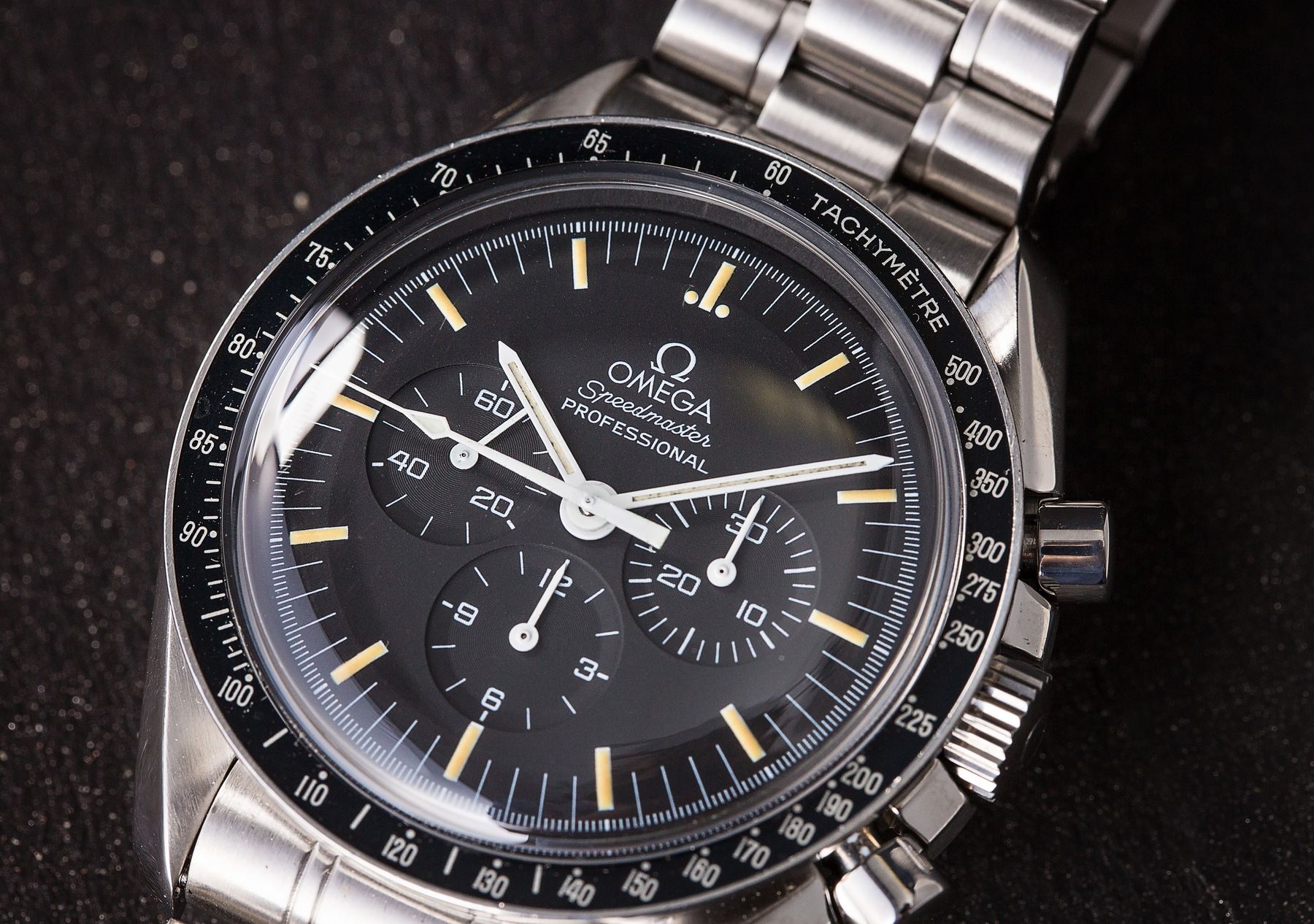
Speedmaster Moonwatch 145.022 Casebacks
The Omega Speedmaster Moonwatch ref. 145.022-69 variant can be found with three different casebacks, each reflecting the period in which they were manufactured. Though increasingly rare, pre-Moon 145.022-69 examples can still be found with plain casebacks, engraved with only the word “Speedmaster” and the brand’s hippocampus seahorse emblem. Others received the NASA caseback engraving promoting the Speedmaster’s status as the first watch worn on the moon.
- Plain caseback engraved with the Seahorse (Hippocampus) symbol and “Speedmaster”
- Caseback engraved with “First Watch Worn on the Moon”
- Caseback engraved with “First Watch Worn on the Moon – Apollo XI 1969”
Omega would subsequently release the references 145.022-71, 145.022-74, 145.022-76, and 145.022-78, each bringing forth small updates. Some examples of these updates include new caseback engravings (“Flight-Qualified by NASA for all manned space missions” medallion was introduced with the -71 sub-reference), new dials (the -74 sub-reference replaced the step dial with a flat dial), and minor changes in dial typography and bezel details.
As a result, the Omega Speedmaster ref. 145.022 watch received many small changes throughout its production history. In 1981, Omega began using the 145.0022 reference number but, confusingly enough, retained 145.022 as the case reference number.
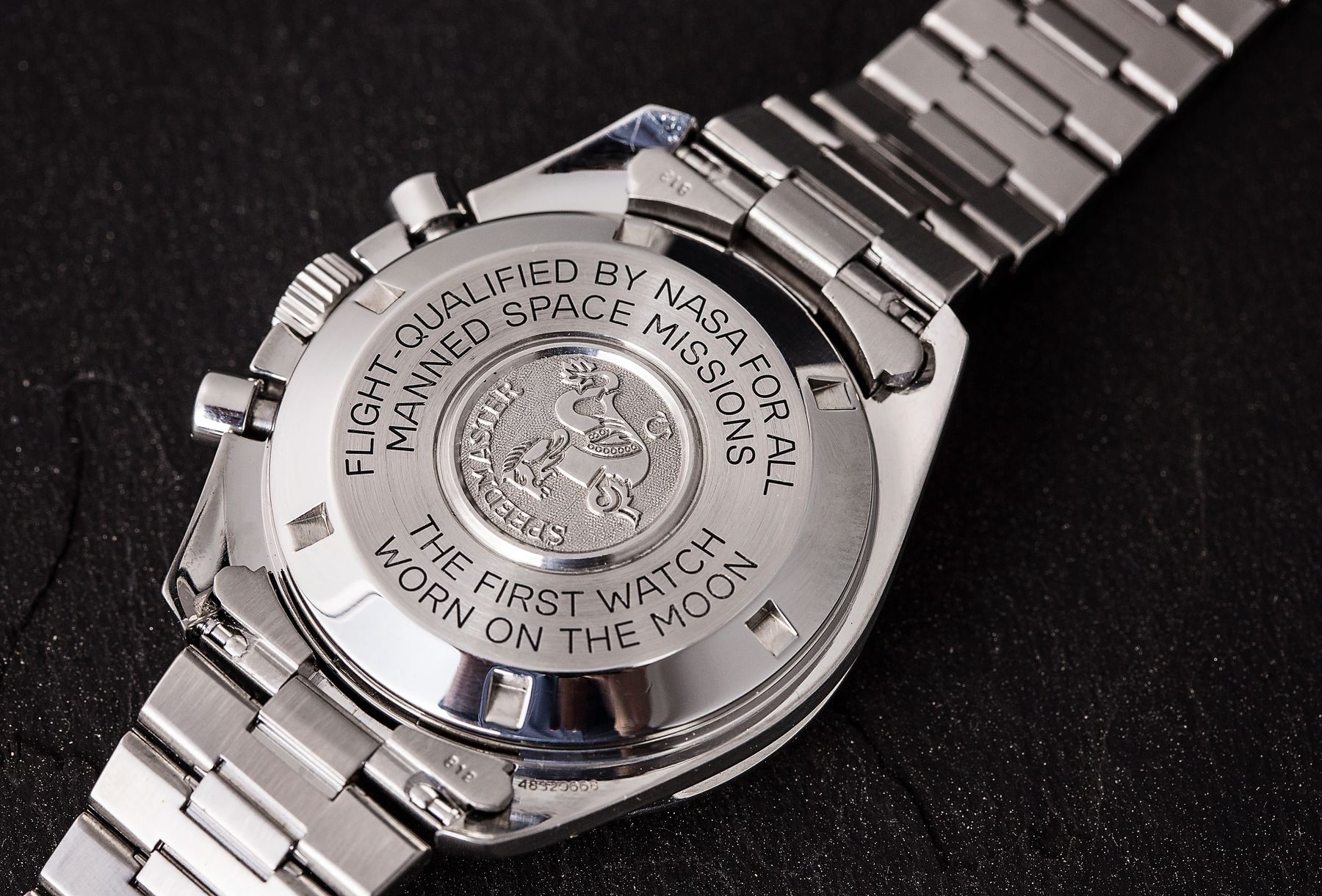
Speedmaster Professional Reference ST 145.0022
In the early 1980s, Omega began changing how it assigned reference numbers, and the Speedmaster 145.022 became the ST 145.0022. However, to make matters even more confusing for future collectors, the inside of the casebacks were still stamped 145.022.
The Omega Speedmaster ST 145.0022 was in production from 1981 to 1988, retaining the signature 42mm steel case with twisted lyre lugs, black tachymeter bezel, black dial punctuated with the trio of subsidiary dials, and the Caliber 861 movement of its six-digit predecessor.
In short, the Speedmaster Professional 145.022 and the ST 145.0022 are one and the same but assigned slightly different reference numbers due to Omega changing its reference numbering system. It is not uncommon to see a pre-owned Speedmaster Professional Moonwatch from the mid-1980s labeled by sellers as the reference 145.022 even though Omega had adopted the newer ST 145.0022 reference number by then.
In 1988, Omega revamped its reference number system yet again and under this then-new PIC coding system, the ST 145.0022 became the Speedmaster Professional 3590.50.
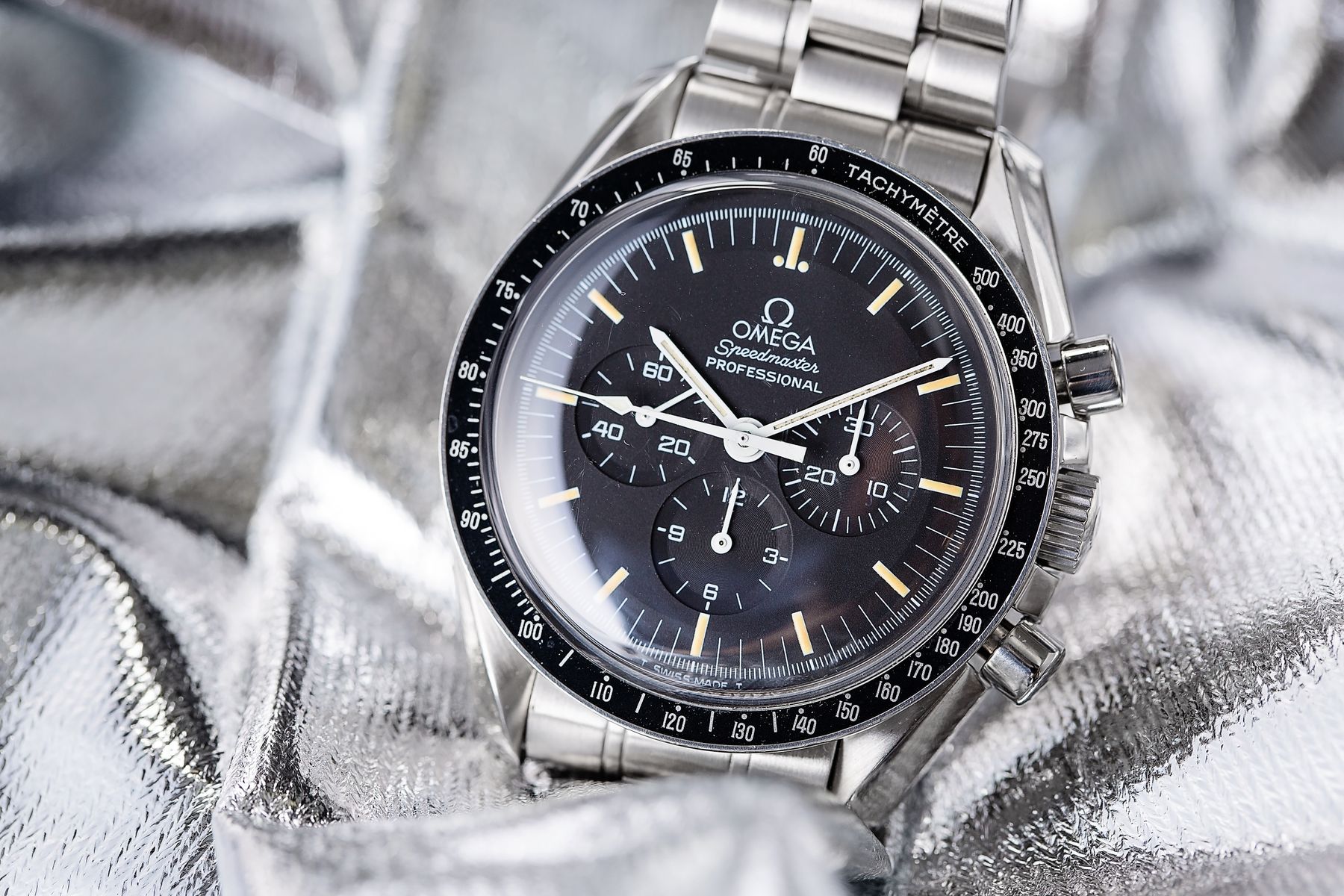
The Popular Omega Speedmaster 145.022 and
The Speedmaster 145.022 is arguably one of the most significant references in Omega’s back catalog. Not only is it the watch that celebrated the brand’s momentous achievement of getting an Omega watch on the Moon, but it is also a mechanical watch that endured the “Quartz Crisis” and came out triumphantly on the other side.
So why is the 145.022 such a popular reference on the pre-owned watch market? For one, certain variants represent one of the most accessible entry points into the world of important vintage chronographs, given the length of their production run, and the plentiful nature of available examples. Moreover, given all the variations and sub-references, it can be a fun watch to collect and study. For instance, an early -68 model with a “tropical” brown dial with an applied logo would be significantly more expensive than a later -79 model with a flat dial and printed logo, and this is just one of the many small details for collectors to study and pursue.
Finally, the Omega Speedmaster 145.022 watches have proven to be extremely reliable, as a result of the less delicate, cam-actuated Lemania-based Cal. 861 movements. These movements are known to be rather tough and have certainly aged with grace. Combine all of this with the Speedy’s celebrated NASA history, and you’ve got a wonderful combination of tremendous value, good looks, historical significance, and mechanical prowess, which at the right price simply can’t be refused.
